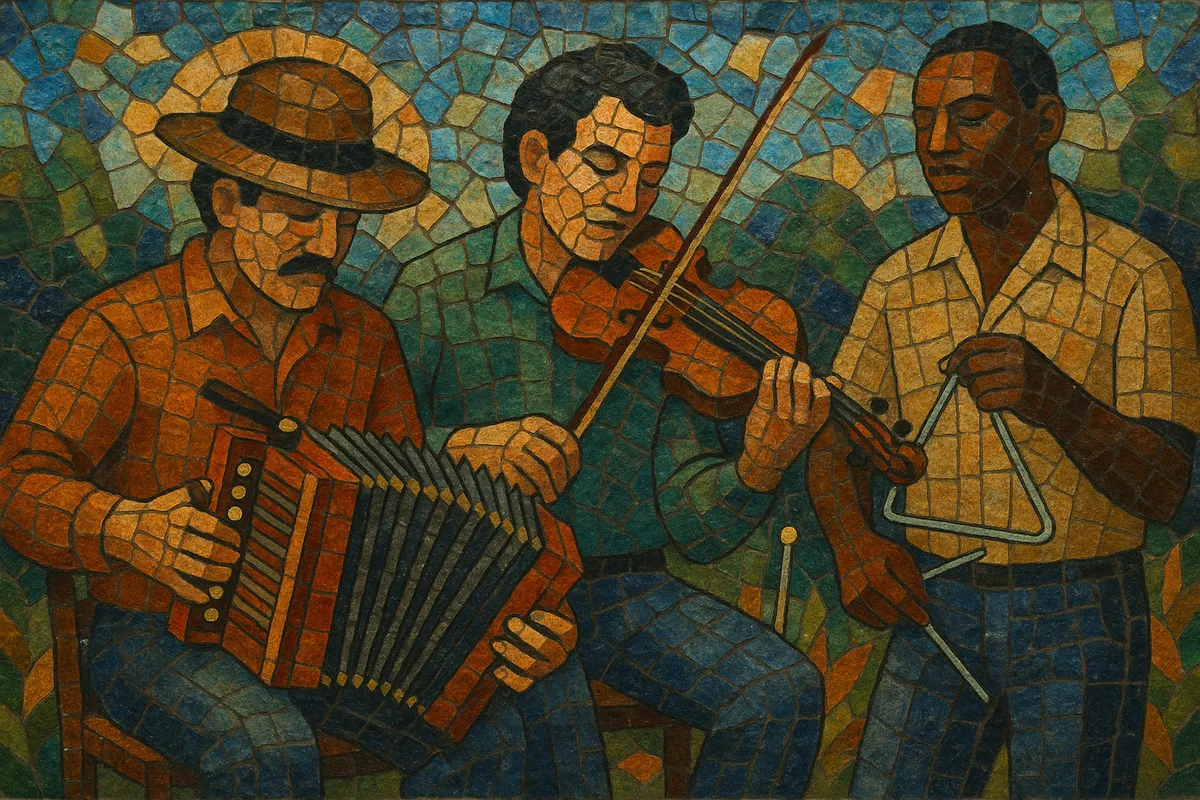Cajun is the dance-driven traditional music of the Francophone Cajuns of south Louisiana, characterized by driving two-steps, lonesome waltzes, and heartfelt, often nasal-tinged vocals sung in Cajun French and English. Its core sound blends button accordion and fiddle, propelled by guitar, bass, and the metallic pulse of the triangle (tit-fer).
Built for social dancing in packed halls, the music emphasizes strong melodic hooks, call-and-response refrains, and sturdy rhythms. Repertoires include up-tempo two-steps in duple meter and lyrical waltzes in triple meter, with instrumental breaks that showcase the accordion’s bellows phrasing and the fiddle’s double-stops and slides. Over time, Cajun incorporated elements from country, blues, and swing while retaining a distinct regional identity.
Cajun music developed among Acadian-descended communities who settled in south Louisiana in the late 18th century after being expelled from Nova Scotia. Early community repertoire centered on French ballads, dance tunes, and fiddle music played at fais do-do (dance parties), with the fiddle typically leading.
The arrival of the German diatonic button accordion to Louisiana in the late 19th century transformed the sound. By the 1920s, Cajun bands featuring accordion, fiddle, and triangle were recorded commercially. Joe Falcon & Cleoma Breaux’s 1928 “Allons à Lafayette” is often cited as a milestone. Amédé Ardoin, a Creole accordionist and singer, bridged Cajun and Creole traditions, leaving a profound imprint on repertoire, vocal delivery, and accordion style.
As radio and dancehall culture grew, bands like the Hackberry Ramblers absorbed Western swing, country, and jazz, adding steel guitar, drums, and even English lyrics—yielding the substyle often called “Cajun swing.” After World War II, Iry LeJeune’s passionate, accordion-led waltzes and two-steps helped spearhead a return to a more French-forward, traditional sound. The 1960s folk revival took Cajun to national stages; the Balfa Brothers’ appearance at the 1964 Newport Folk Festival was pivotal, and institutional support (e.g., CODOFIL) bolstered language and cultural preservation.
From the 1970s onward, artists such as BeauSoleil and later Steve Riley & the Mamou Playboys blended tradition with contemporary influences while maintaining dance-floor power. Festivals Acadiens et Créoles and a robust regional scene sustain transmission across generations. Today, Cajun thrives in both traditional formats and innovative hybrids, remaining central to Louisiana’s cultural identity and popular dance culture.
Alternate between two main dance feels:
•Two-step: duple meter (2/4 or 4/4) at lively tempos; emphasize a strong backbeat with steady guitar strumming and triangle pulse.
•Waltz: 3/4 with a lilting sway; keep the bass “oom” and chords “pah-pah.”
•Keep arrangements tightly focused on danceability—clear downbeats, consistent tempo, and space for dancers to interpret.


